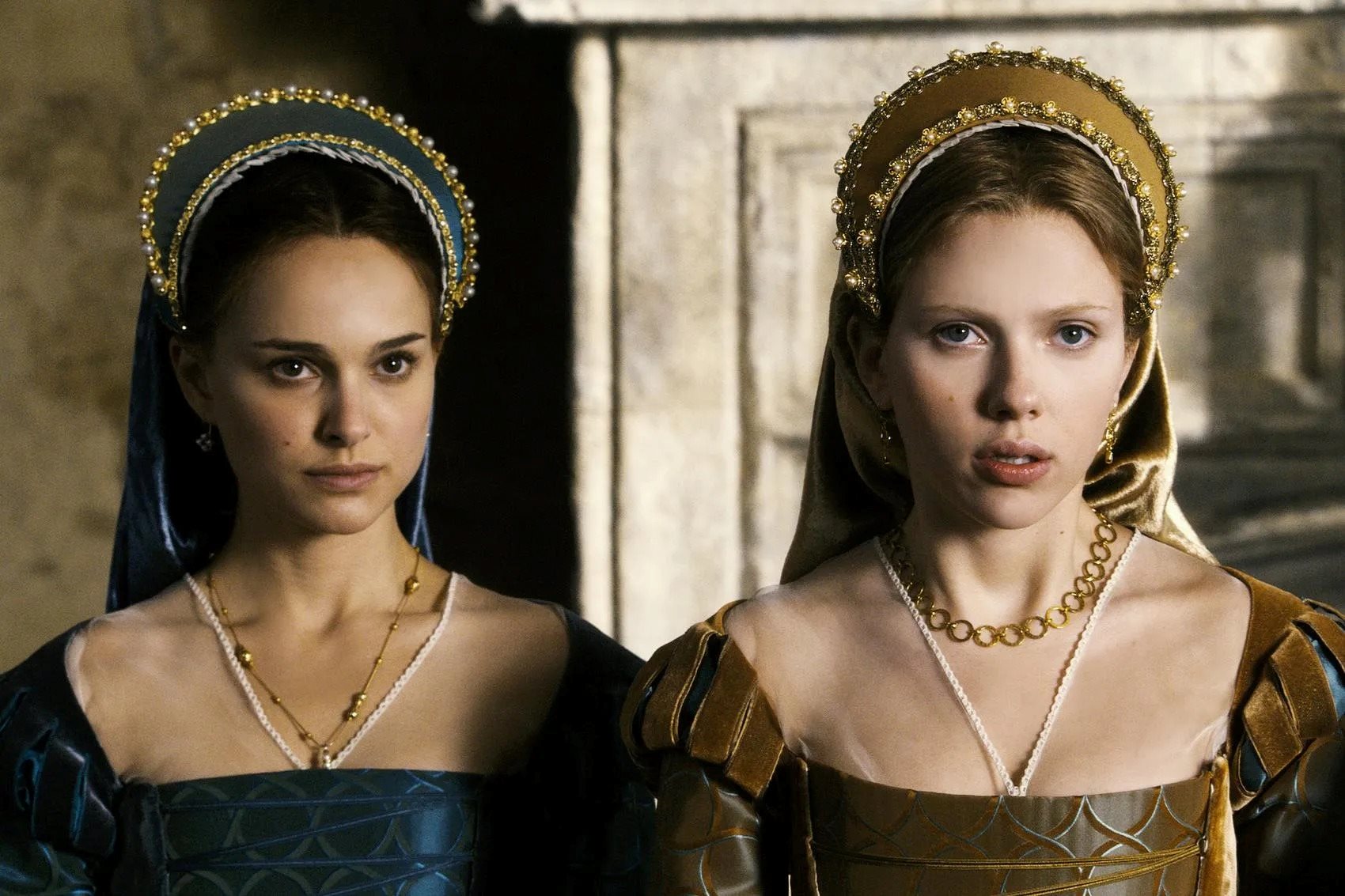Home>Arts and Culture>The Shocking Truth Behind ‘The Other Boleyn Girl’ Revealed: How Historically Accurate Was It?


Arts and Culture
The Shocking Truth Behind ‘The Other Boleyn Girl’ Revealed: How Historically Accurate Was It?
Published: February 2, 2024
Uncover the truth about the historical accuracy of 'The Other Boleyn Girl' and its portrayal of arts and culture. Delve into the shocking revelations behind the movie's depiction of this captivating period in history.
(Many of the links in this article redirect to a specific reviewed product. Your purchase of these products through affiliate links helps to generate commission for Noodls.com, at no extra cost. Learn more)
Table of Contents
Introduction
"The Other Boleyn Girl" by Philippa Gregory is a captivating historical novel that delves into the intriguing lives of the Boleyn sisters, Mary and Anne, against the backdrop of the Tudor court. The novel has garnered widespread attention, captivating readers with its blend of romance, political intrigue, and the allure of courtly life. As readers immerse themselves in the pages of this compelling narrative, they are often left wondering about the historical accuracy of the events and characters depicted in the novel.
This article aims to unravel the truth behind "The Other Boleyn Girl" by critically examining the historical context, the portrayal of the Boleyn family, and the relationship between Mary Boleyn and Henry VIII. By delving into the real-life events and characters that inspired the novel, we can gain a deeper understanding of the extent to which Philippa Gregory's portrayal aligns with historical records. This exploration will shed light on the fascinating intersection of literature and history, inviting readers to embark on a thought-provoking journey through the Tudor era.
With the stage set for an exploration of the historical intricacies woven into "The Other Boleyn Girl," readers are invited to join in the quest for truth and insight. By peeling back the layers of fiction to reveal the historical foundations beneath, we can gain a richer appreciation for the lives and legacies of the Boleyn sisters and their enthralling journey through one of the most captivating periods in English history.
The Boleyn Family
The Boleyn family, an influential noble lineage during the Tudor era, played a pivotal role in the political and social tapestry of 16th century England. At the helm of the family stood Thomas Boleyn, a shrewd and ambitious courtier who navigated the intricate web of royal favor and political alliances. His wife, Elizabeth Howard, hailed from a prestigious family, adding to the Boleyns' standing in the aristocratic circles of the time.
Mary Boleyn, the eldest daughter, and Anne Boleyn, the younger sister, emerged as central figures in the family's legacy. Their upbringing was steeped in the refinement and sophistication befitting their noble status, and they were groomed to excel in the art of courtly etiquette and intellectual pursuits. The Boleyn sisters' education and accomplishments positioned them as sought-after companions in the royal court, where their wit and charm captivated the nobility, including King Henry VIII himself.
The Boleyn family's ascent to prominence was further solidified by strategic marriages and alliances, which propelled them into the inner circles of power. Their connections with influential figures such as Cardinal Thomas Wolsey and the Duke of Norfolk elevated their status and influence, positioning them at the heart of the Tudor court's intricate power dynamics.
However, the family's rapid rise to prominence was not without its complexities and controversies. Ambition and political maneuvering often intertwined with personal relationships, creating a delicate balance between loyalty to the crown and the pursuit of individual agendas. The Boleyn family's intricate dance within the corridors of power set the stage for the dramatic events that would unfold, forever altering the course of English history.
As the Boleyn family's legacy continued to unfold, their intricate ties to the Tudor court and the broader political landscape of England became increasingly intertwined with the fates of Mary and Anne Boleyn. Their individual journeys, marked by ambition, love, and betrayal, would ultimately shape the course of history and leave an indelible mark on the annals of the Tudor era.
The Boleyn family's enduring legacy serves as a testament to the captivating blend of ambition, intrigue, and resilience that defined the noble houses of the Tudor era. Their story continues to captivate the imagination of readers and historians alike, offering a compelling glimpse into the captivating world of courtly politics and personal triumphs.
The Relationship between Mary Boleyn and Henry VIII
The relationship between Mary Boleyn and Henry VIII has been shrouded in mystery and intrigue, captivating the imagination of historians and novelists alike. Mary Boleyn, the elder sister of Anne Boleyn, found herself entangled in a complex and controversial liaison with the charismatic and enigmatic King of England.
Historical accounts suggest that Mary Boleyn's relationship with Henry VIII transcended the boundaries of mere courtly dalliance, evolving into a profound and intimate connection that left an indelible mark on both their lives. Mary's allure and grace captivated the king, drawing him into a passionate affair that unfolded amidst the opulent backdrop of the Tudor court.
The complexities of Mary Boleyn's relationship with Henry VIII are further underscored by the political implications and personal ramifications that reverberated throughout the royal court. As the king's affections turned towards Mary, the delicate balance of power within the court was irrevocably altered, setting the stage for a tumultuous interplay of love, ambition, and political intrigue.
While the precise nature of their relationship remains a subject of historical debate and speculation, the enduring allure of Mary Boleyn's connection to Henry VIII continues to fascinate scholars and enthusiasts of Tudor history. The enigmatic bond between the king and Mary Boleyn serves as a testament to the captivating interplay of personal dynamics and political ramifications that characterized the Tudor court.
As readers delve into the pages of "The Other Boleyn Girl," they are beckoned into the intricate web of emotions and aspirations that defined Mary Boleyn's enthralling journey through the corridors of power. The novel's portrayal of Mary's relationship with Henry VIII invites readers to ponder the complexities of love and loyalty in the tumultuous landscape of Tudor England, offering a compelling glimpse into the human drama that unfolded amidst the grandeur of the royal court.
The enduring legacy of Mary Boleyn's relationship with Henry VIII serves as a poignant reminder of the enduring impact of personal connections on the tapestry of history, inviting readers to contemplate the far-reaching consequences of love, ambition, and betrayal in the annals of the Tudor era.
Accuracy of Portrayal of Anne Boleyn
The portrayal of Anne Boleyn in "The Other Boleyn Girl" offers a compelling depiction of a woman whose intelligence, charisma, and ambition propelled her into the heart of the Tudor court's power dynamics. Anne's enigmatic persona, characterized by her wit, charm, and unwavering determination, is intricately woven into the fabric of Philippa Gregory's narrative, captivating readers with its blend of historical authenticity and artistic interpretation.
In assessing the accuracy of Anne Boleyn's portrayal in the novel, it is essential to consider the historical sources and accounts that shed light on her multifaceted personality and pivotal role in the tumultuous events of the Tudor era. Anne's ascent from a captivating lady-in-waiting to the influential queen consort of Henry VIII is a testament to her indomitable spirit and strategic acumen, elements that are vividly captured in the novel's depiction of her character.
The novel adeptly navigates the complexities of Anne Boleyn's relationships, both personal and political, offering a nuanced portrayal of her interactions with key figures such as Henry VIII, Cardinal Wolsey, and Thomas Cromwell. The interplay of Anne's intellect, ambition, and unwavering resolve is masterfully conveyed, inviting readers to immerse themselves in the intricate web of emotions and aspirations that defined her journey through the corridors of power.
While "The Other Boleyn Girl" presents a vivid and captivating portrayal of Anne Boleyn, it is important to acknowledge the artistic liberties taken in interpreting historical events and characters. The novel's narrative prowess lies in its ability to intertwine historical authenticity with imaginative storytelling, offering a compelling blend of fact and fiction that brings Anne Boleyn's captivating persona to life.
Readers are beckoned into the captivating world of Anne Boleyn, where her indelible mark on the Tudor court and her enduring legacy are brought to the forefront. The novel's portrayal of Anne Boleyn serves as a testament to the enduring allure of her enigmatic persona, inviting readers to ponder the complexities of power, love, and ambition that defined her remarkable journey through one of the most captivating periods in English history.
As readers delve into the intricacies of Anne Boleyn's portrayal in "The Other Boleyn Girl," they are invited to embark on a thought-provoking exploration of the intersection between historical authenticity and artistic interpretation. The novel's depiction of Anne Boleyn's indomitable spirit and enduring impact offers a compelling glimpse into the captivating world of Tudor England, where her legacy continues to captivate the imagination and curiosity of enthusiasts and scholars alike.
Historical Context of the Novel
The historical context of "The Other Boleyn Girl" is intricately woven into the tapestry of the Tudor era, a period characterized by political upheaval, religious turmoil, and the captivating allure of courtly life. Against the backdrop of 16th century England, the novel unfolds within the intricate web of power dynamics, personal ambitions, and the enduring legacy of the Boleyn family.
The Tudor era, marked by the reign of monarchs such as Henry VIII and the indomitable Queen Elizabeth I, stands as a testament to the interplay of political intrigue and cultural renaissance. The novel immerses readers in the vibrant tapestry of Tudor England, where the grandeur of the royal court converges with the tumultuous currents of religious reform and dynastic aspirations.
The sweeping changes brought about by the English Reformation, catalyzed by Henry VIII's quest for a male heir and his tumultuous marital affairs, serve as a pivotal backdrop for the novel's narrative. The religious and political upheaval of the era reverberates throughout the lives of the Boleyn sisters, shaping their destinies and entwining their fates with the grand designs of the Tudor monarchy.
The novel's portrayal of the Boleyn family's ascent to prominence and their intricate ties to the Tudor court reflects the enduring legacy of noble houses vying for favor and influence amidst the shifting sands of power. The interplay of personal relationships, political alliances, and the pursuit of individual ambitions provides a compelling glimpse into the complexities of courtly life during a transformative period in English history.
As readers journey through the pages of "The Other Boleyn Girl," they are transported to a world where the grandeur of the Tudor court converges with the personal triumphs and tribulations of the Boleyn sisters. The novel's historical context serves as a captivating lens through which to explore the enduring impact of the Tudor era on the lives of its illustrious inhabitants, inviting readers to unravel the intricacies of power, love, and betrayal within the rich tapestry of history.
The novel's portrayal of the historical context of the Tudor era offers a captivating blend of historical authenticity and imaginative storytelling, inviting readers to embark on a thought-provoking exploration of a transformative period that continues to captivate the imagination and curiosity of enthusiasts and scholars alike.
Conclusion
In conclusion, "The Other Boleyn Girl" by Philippa Gregory offers a captivating journey through the lives of the Boleyn sisters within the rich tapestry of Tudor England. The novel's portrayal of the Boleyn family's ascent to prominence, the intricate dynamics of courtly life, and the enduring legacy of historical figures such as Mary and Anne Boleyn invites readers to immerse themselves in a world of ambition, love, and political intrigue.
As readers navigate through the novel's pages, they are beckoned into a thought-provoking exploration of the intersection between historical authenticity and creative interpretation. The captivating portrayal of the Boleyn sisters' enthralling journey through the tumultuous currents of the Tudor court offers a compelling blend of fact and fiction, inviting readers to ponder the complexities of power, love, and betrayal within the annals of history.
The enduring allure of "The Other Boleyn Girl" lies in its ability to intertwine historical events and characters with the imaginative storytelling prowess of Philippa Gregory. The novel's depiction of the Boleyn sisters and their indelible mark on the Tudor era serves as a testament to the enduring impact of personal connections and political ambitions on the tapestry of history.
As readers partake in the exploration of the novel's historical context and the intricacies of the Boleyn family's legacy, they are invited to contemplate the far-reaching consequences of love, ambition, and betrayal within the captivating world of Tudor England. The enduring legacy of the Boleyn sisters and their enduring impact on the course of English history continues to captivate the imagination and curiosity of enthusiasts and scholars alike.
In traversing the captivating landscape of "The Other Boleyn Girl," readers are offered a glimpse into the enthralling world of courtly politics, personal triumphs, and the enduring legacy of historical figures whose lives continue to resonate across the centuries. Philippa Gregory's masterful blend of historical authenticity and imaginative storytelling invites readers to embark on a captivating journey through one of the most captivating periods in English history, where the allure of power, love, and ambition converges within the grandeur of the Tudor court.














